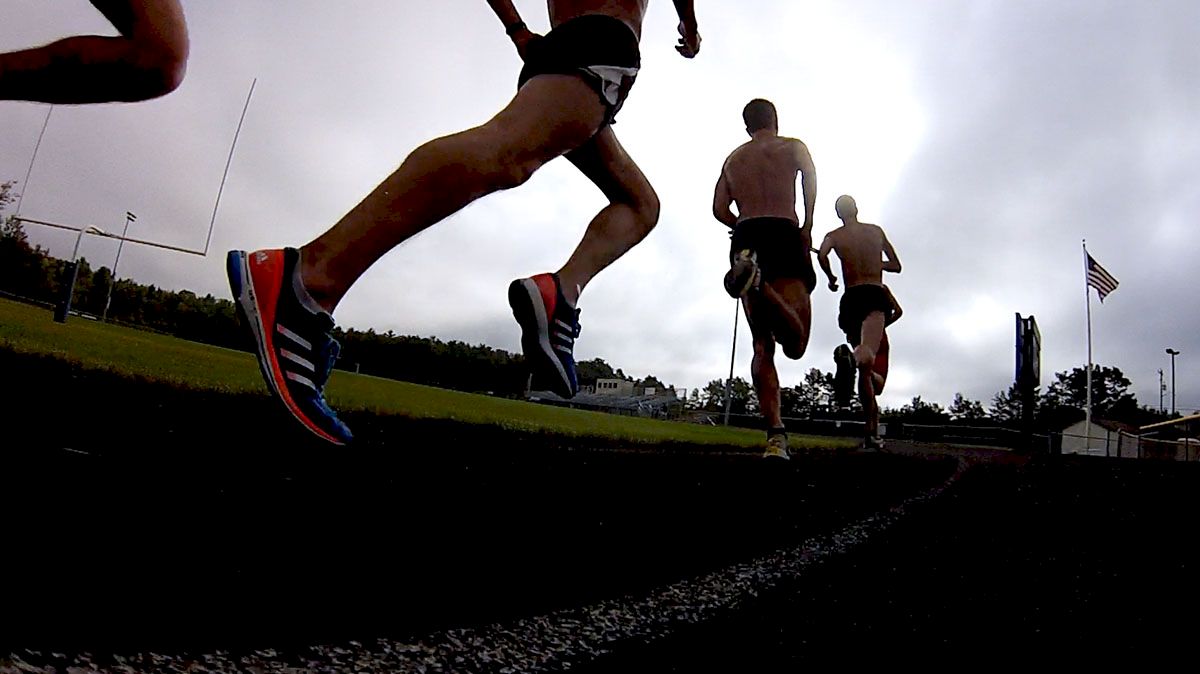Ok....Time For Some Core by Danny Mackey M.S.
Ok....Time For Some Core by Danny Mackey M.S.

Ok….Time For Some Core
By Danny Mackey M.S.
If you are on any sort of team, “ok…time for some core” is a common phrase you will hear. But this is a relatively new training method. Ten to 15 years ago the use of core work by runners was typically left to the professional athletes. The reason is the professionals where the only people that had the time to do the extra work that might help their performance. When college, high school or recreational distance runners were to do any auxiliary training after a run it usually entailed joining the throwers in the weight room. Weights are not a bad thing. All you have to do is look at Flotrack’s WOW with Haile Gebrselassie (http://www.flotrack.org/videos/speaker/1555-haile-gebrselassie/363222-haile-geb-wow-nyc-prep) to see that lifting weights is still a relevant tool to improving performance. In addition, there are years and years of research that support weight training regardless of whether or not you are a 100M runner or a marathoner. Yet, interest in core stability strength training has increased dramatically, sometimes in lieu of other activities. So, how does core training factor into the equation?
To be clear, let’s define core exercises. Core exercises include dynamic weight training, medicine ball training, and balance training. One reason this has become so popular is because trainers feel core training leads to greater over-all strength, a reduction in injuries, and more efficient mechanics by enhancing neuromuscular pathways (1). Further, some researchers suggest athletes’ would experience better coordination of synergistic and stabilizer muscles in the rectus abdominis and external obliques (2). Other research shows us that running on unstable conditions leads to reduced force output, reduced agonist muscle activation and increased antagonist activity (3). Even so, how does this relate to running? To get the framework to understand how our core functions while running, think about this way: if you had to run a 5k, imagine doing it on an uneven, loose-gravel cross country course and then imagine doing it on a Mondo track. Now there are the obvious disadvantages to the cross country course like low energy return on the soft surface, loss of traction and the mental difficulty of getting into a rhythm because the terrain is undulating. We do not need science to tell us that it is a lot harder to run a 5 minute mile on that uneven lose gravel road than it is on a track. We know this intuitively. But there are very subtle changes in our mechanics going on we are not necessarily conscious of while running. Ultimately we want to run as if we were on a perfect Mondo track regardless of the surface. Now let’s explore how this can happen from a scientific (physiological, etc.) perspective.
Core focuses on our stability muscles. If those are stronger we will be more stable during the stance phase of our gait cycle. Thus, our propulsive forces will be higher and we will have more consistent movement control. In other words, we will run faster. (Keep in mind that I am intentionally oversimplifying this example in that I am not considering the metabolic variables. Trust me, I wish it was this simple!). Ignoring race times, core training significantly improves core strength compared to conventional ab work and strength training (4). This is one reason why physical therapists now integrate core training methods into most musculoskeletal injury rehabilitation protocols. If you are coming off an injury, doing these exercises is another way to stay healthy.
The injury prevention aspect to core training is also logical. Through biomechanical research we know that “too high” or “too low” horizontal and vertical ground reaction forces are associated with overuse injuires (5). Typically, at initial heel strike we are between 1.6-2.3 times our body weight. If our ground reaction forces are too low at initial heel strike, then we have to make up for it elsewhere in our gait cycle and increase the forces put on our midfoot or forefoot. If they are too high, we might see a nasty overuse injury pop up, like “shin splints,” for example. By simply being more balanced and strong through our core we may help keep ground reaction forces in this healthy, “normal” range.
Research also suggests that in order to see an effect of core training we need to look at the frequency of sessions. Many studies that had the subject perform core sessions 2 times a week did not show much of an increase in performance. The research suggests 3 to 4 workouts a week will greatly improve the likelihood of seeing the benefits on the track (4).
It is important to note that I did not find research studies using “highly trained” athletes as subjects. I think there are confounding variables in training and genetics of a 21 min 5ker running 40 miles a week versus a 14 min 5ker running 100 miles a week. Thus, if you are training at a high level it might very well be worth the time to do core work 2 times per week because of all the other auxiliary work you are doing may complement the core exercises.
As with any training, keep in mind that everyone is different. Listen to the coaches and trainers that work with you daily. They will be the best judge regarding your individual response potential. Now it is time for some core!